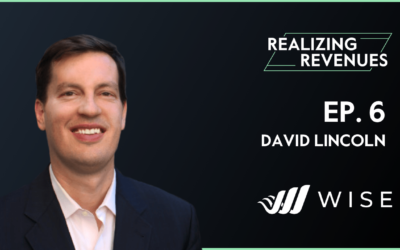Many advisors have dreamed of quitting their job and starting their own business, but actually doing it takes a lot of planning and dedication. The good news is that plenty of others have already made the decision to breakaway and you can learn a lot from their success and mistakes along the way. With the right planning and commitment, the breakaway process can be a smooth transition for both you and your clients.
In this post, we will look at why advisors choose to breakaway, how to make the decision to breakaway, and three steps to ensure a smooth breakaway process.
Why Advisors Breakaway
If you’ve thought of leaving your firm, you’re not alone. Advisors often look to break away for reasons ranging from a desire for more flexibility to better compensation. They may choose to move between wirehouses, switch to an independent advisory firm, or even launch their own RIA business. Each of these choices has benefits and drawbacks to consider.
About seven percent of financial advisors want to switch firms within the next two years.
The biggest concern is that existing clients won’t follow you to a new firm, but it turns out that these concerns are largely misplaced. According to Wealth Management, the majority of advisors that changed firms during the five year period leading up to 2014 retained between 75 and 100 percent of their clients. Only 14 percent of respondents indicated that they retained less than 25 percent of their former clients in the breakaway process.
While losing clients may not be a concern, a Wealth Management roundtable discussion found that the biggest regret by breakaway advisors was not planning ahead for the transition. The planning process includes both mental planning for the challenges associated with moving, as well as logistical planning for potential legal issues, client transitioning, and goals following the transition to ensure that you’re successful within your new role.
New technology has made it easier than ever to breakaway. For example, Wealth Access’ client portal and comprehensive data aggregation services make it easier for you to access each client’s financial picture without the legwork associated with requesting paper statements and managing the entire process manually. The same platform can be used to streamline prospecting and onboarding processes that typically consume a lot of time and resources.
Should You Breakaway?
The decision to breakaway shouldn’t be taken lightly. You should determine your true motivations, as well as carefully weigh the advantages and disadvantages. For example, if you’re trading one firm for another, how is the new firm different than your current firm? Does a larger paycheck come with any strings attached, such as a less flexible investment policy or less back-office support? Or, will you have more latitude to make your own decisions?
Most breakaway advisors wish they had made the move to independence earlier but breaking away isn’t always possible early in a career when you have less savings and fewer clients. Starting a new practice could leave you without an income for several months while everything gets up and running. You should ensure that you have enough capital to cover your own living expenses, as well as cover the start-up costs associated with the new business.
In addition to having enough capital, it’s important to understand the changes that you’ll face at a new practice. You may need to understand new regulatory rules, adhere to different investment policies, or get up-to-speed with new compliance or back-office technologies. Does the new firm provide training and support services? Are there any other advisors that have already made the move that you can talk to for advice?
Finally, what are your goals with joining a new practice? For example, is your existing book of business appropriate for your new firm or do you want to focus on specific types of clients? Do you want to spend most of your time working one-on-one with clients at an RIA or do you want the back-office support of a broker-dealer environment? Is your primary goal for switching to free up more time to spend with your family rather than at the office?
How to Breakaway
Hire a Lawyer
The first step is reviewing any agreements with your existing employer, including non-solicitation agreements, non-compete clauses, and financial penalties that may be incurred if you leave the firm. Work with outside legal counsel to make sure that none of these agreements precludes you from making the transition and review the terms of the deal with the new practice to ensure that there’s no stone unturned.
Your legal counsel can also guide you through planning and executing the documentation, filings, and license applications needed to get set up in your new practice. In addition to these getting these documents in order, they can help you create processes to meet privacy, compliance, and other requirements at your new firm, as well as keep you safe from any legal issues that may arise after leaving your current firm.
Get Paperwork in Order
The next step is ensuring that all of your current client information is well organized by making a list of all books of business, clients, and accounts. These clients should be prioritized based on their fit with your new practice and with clear communication plans and timelines in place. You should look at each relationship, the portability of assets, and the breadth of relationships with your current firm before deciding if you want to bring these clients into the fold.
Before you start collecting this information, ask your legal counsel if taking these documents will expose you to any legal liabilities under your current firm’s agreements. You may only be permitted to keep certain documents and materials depending on your existing agreements. You may also need to make certain notices to your current firm before resigning, which can impact the timeline of transitioning to a new practice.
Alert Your Clients
The final step is alerting your clients and bringing them into your new practice. Some clients may require very little convincing, but others may want more information before making a decision. You should wait to reach out to these clients until after you’ve resigned from your old firm, but you can start preparing for the transition beforehand by steering conversations toward how you’ve helped the client on a personal level.
Depending on the practice you’re leaving and starting, you may need to explain the differences between commission-based and fee-based practices or other details. It’s important that clients understand what these changes mean for their relationship with you and how it will impact the assets that they’ve entrusted to you. The good news is that most breakaway advisors manage to keep most of their existing clients after making a transition.
The Bottom Line
Many advisors dream of breaking away to form their own practice or join a different firm. By following the advice we’ve covered, you can make the breakaway process a lot smoother for you and your clients. Most advisors that breakaway end up retaining most of their clients and regret not making the decision sooner in their career.
If you’re interested in technology solutions that simplify your new practice, Wealth Access offers a digital client experience that can set you apart from the competition, with a client portal, mobile app, and much more backed by comprehensive data aggregation technology. Contact us today for a free consultation to learn more about how we can help fuel your growth.



